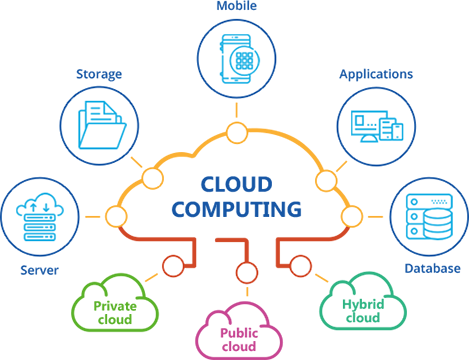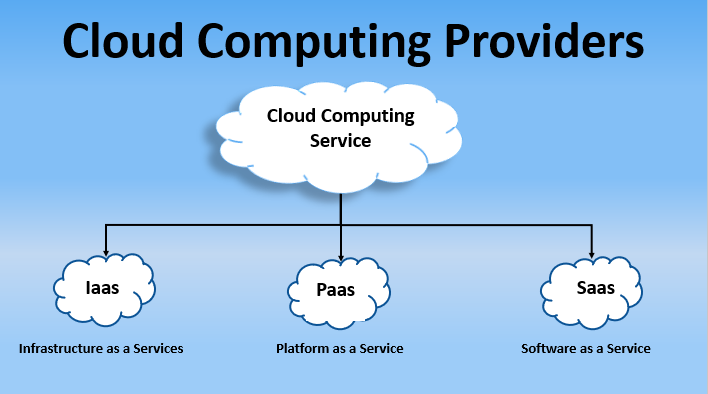Raise Your Company with LinkDaddy Cloud Services: Unleashing Universal Cloud Service Potential
Raise Your Company with LinkDaddy Cloud Services: Unleashing Universal Cloud Service Potential
Blog Article
Simplify Your Facilities With Cloud Services
As services navigate the ever-evolving landscape of technology and information administration, the role of cloud solutions in simplifying facilities has become progressively prominent. How can companies efficiently browse this shift and absolutely open the potential of cloud services for simplifying their facilities?
Advantages of Cloud Services
Cloud services use a structured strategy to managing IT infrastructure, providing companies with cost-efficiency, scalability, and flexibility. One of the crucial advantages of cloud services is the scalability they use. Companies can conveniently scale their resources up or down based on demand, guaranteeing they only pay for what they use. This adaptability is specifically advantageous for businesses with rising and fall demands or those experiencing growth.
Furthermore, cloud solutions eliminate the need for businesses to spend in pricey software and hardware. This cost-efficiency is a significant benefit, specifically for little to medium-sized ventures seeking to reduce ahead of time costs. By utilizing cloud services, services can access top notch IT sources without the substantial cost connected with traditional framework setups.
In addition, cloud services offer businesses with the flexibility to access their information and applications from anywhere with an internet connection. This degree of availability boosts collaboration among teams, allows remote work, and increases overall performance. The flexibility supplied by cloud services empowers services to adapt swiftly to changing market conditions and customer demands.
Cost Cost Savings and Scalability
Along with the functional advantages highlighted previously, the combination of cloud solutions right into a firm's framework brings forth considerable expense financial savings and improved scalability. Cloud services offer a pay-as-you-go design, enabling services to scale resources up or down based on existing demands, thus avoiding the prices related to preserving excess capability. This versatility enables companies to adapt swiftly to changing demands without incurring unnecessary expenditures.
In addition, cloud solutions remove the need for ahead of time financial investments in software and hardware, reducing capital investment. General expenses are likewise lessened as companies no much longer require to manage and keep physical web servers, bring about reduced power consumption and IT staffing costs. Additionally, cloud solutions supply automated updates and maintenance, ensuring that the framework stays current and safe and secure without requiring hands-on interventions.
Boosted Protection Procedures
Carrying out rigorous safety measures is paramount when integrating cloud services right into a business's framework to make certain and protect delicate information conformity with market laws. Cloud service companies offer enhanced safety functions such as data security, firewall software protection, and multi-factor verification to alleviate cybersecurity threats.
Additionally, normal protection audits and compliance assessments aid identify vulnerabilities and make certain adherence to sector standards. Business can additionally gain from attributes like automated protection updates and real-time danger surveillance supplied by cloud solution providers. By prioritizing safety actions and staying aggressive in addressing potential risks, cloud services press release companies can confidently leverage cloud solutions while shielding their beneficial information from unapproved gain access to or violations.
Transitioning to Cloud Facilities
To efficiently incorporate cloud solutions into a business's framework, a structured technique that attends to the change towards cloud-based services is critical. Transitioning to cloud infrastructure includes mindful planning and execution to guarantee a smooth migration process - linkdaddy cloud services.
As soon as the analysis is full, a movement method need to be established. This approach should describe the timeline, sources, and responsibilities for moving each part to the cloud. It is vital to communicate this strategy clearly to all stakeholders to ensure placement and minimize disruptions during the transition.
During the migration testing, tracking and process are essential to determine and address any issues without delay. Routine checkpoints should be developed to track progress and make needed changes. In addition, training for staff members on utilizing cloud services need to be offered to make sure a successful shift and make best use of the advantages of the new framework.
Ideal Practices for Cloud Adoption
Successful adoption of cloud services hinges on the strategic positioning of service purposes with technological capacities and organizational preparedness. To make certain a smooth shift to the cloud, companies should begin by performing a thorough evaluation of their current facilities and determining which work are best fit for cloud migration. It is critical to entail vital stakeholders from different divisions in the decision-making process to acquire buy-in and deal with any type of issues beforehand.
One more ideal technique for cloud adoption is to prioritize security and compliance. Organizations must carefully examine the safety and security actions provided by cloud company and ensure that their information is secured according to sector standards and regulative needs. Carrying out robust data security, gain access to controls, and normal safety and security audits can aid mitigate risks related to cloud adoption.

Conclusion

As businesses browse the ever-evolving landscape of innovation and data monitoring, the role of cloud solutions in simplifying infrastructure has actually ended up being significantly noticeable - Cloud Services. How can services efficiently browse this transition and really unlock the capacity of cloud services for streamlining their framework?
Cloud services provide a structured approach to managing IT framework, providing organizations with flexibility, cost-efficiency, and scalability. By utilizing cloud solutions, services can access high-quality IT resources without the large price tag associated with typical infrastructure arrangements.
To ensure a smooth transition to the cloud, organizations must start by performing a comprehensive analysis of their current facilities and determining which workloads are best matched for cloud migration.
Report this page